Holo Toolkit 2.0 Deploy VCF VLC GUI
Deploy VCF With VLC GUI
Overview
This section demonstrates the deployment of the VLC-Holo-Site-1 nested lab using the VLC GUI
Prerequisites
- IP address for your ESXi host or vCenter Server instance managing your ESXi host. DNS services are not available inside the Holodeck environment until VLC deploys an instance of Cloud Builder.
Note: This task can only be performed from the Holo-Console deployed inside the environment. They can be carried out by directly accessing the Holo-Console via the ESXi console option, or via RDP to the Holo-Router IP address.
Update VCF configuration file for VCF 4.5 deployment (Optional)
This step configures the VCF main json to support VCF 4.5.
- On the Holo-Console, use the Windows File Manager to navigate to C:\VLC\VLC-Holo-Site-1
- Open Holo-Site-1-vcf-ems-public.json for editing
- Update dvSwitchVersion to “7.0.0” and save the file
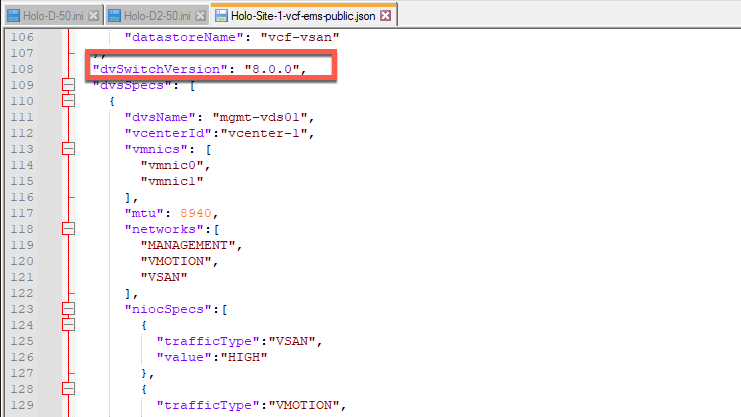
Deploy VCF using VLC GUI method
This task demonstrates using the VLC GUI to perform the Holodeck deployment.
Run VLC
- Using the vSphere client, open a console window to the Holo-Console VM created earlier.
- Login as Administrator with a password of VMware123!
- Using Windows File Manager, navigate to C:\VLC\VLC-Holo-Site-1
- Right click on VLCGui.ps1 and click Run with PowerShell
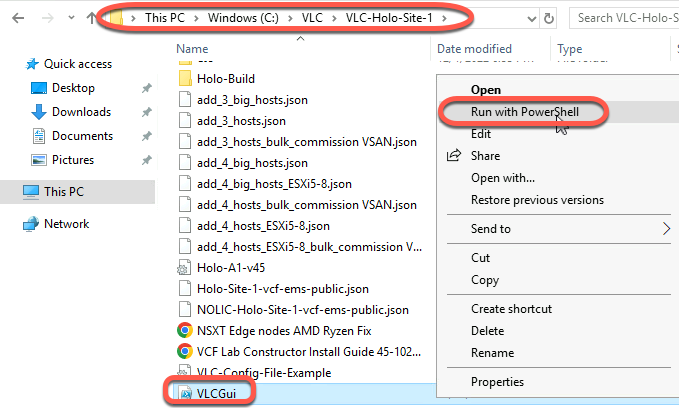
- Wait for the VLC UI to be displayed.
- Click Automated on the VLC UI

- Click on the VCF EMS JSON field

- Select the C:\VLC\VLC-Holo-Site-1\Holo-Site-1-vcf-ems-public.json, then click Open

- Enter 10.0.0.1 for the address of the gateway in the Ext GW field
- If your lab requires use of DNS other than 8.8.8.8, enter in Ext DNS
- Click on the input field for CB OVA Location

- Select the appropriate Cloud Builder OVA (This example uses a developmental 5.0 build) and click Open

- Add a unique name in the Prefix for VMs field. This allows for easy identification of the resources deployed for a given lab. This example uses the prefix of Holo-D. Best practice naming is use a common letter designator for the physical ESXi host port group, Holo-Console, Holo-Router and VM Prefix. Here we are using Holo-D-Console, Holo-D-Router and VM Prefix Holo-D, all running on port group VLC-D-PG

- Click on Addl Hosts JSON and select the file C:\VLC\VLC-Holo-Site-1\add_3_hosts.json and click Open
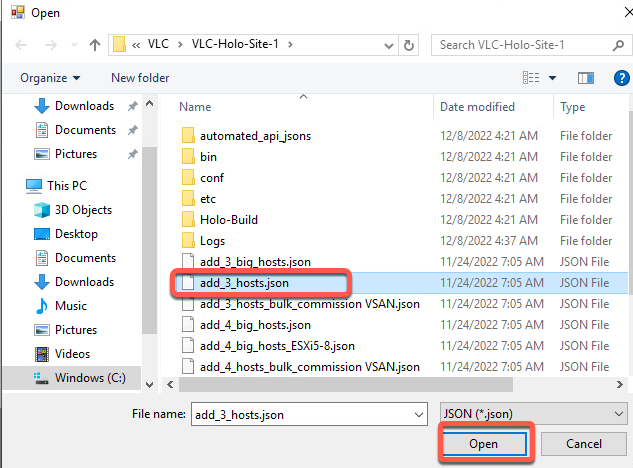
- Leave First 3 Addl hosts as blank
- Check Deploy Edge Cluster
- Select Deploy Workload Mgmt?
- Select Deploy AVNs
- Leave Do Bringup? checked

- Enter the IP address of the ESXi host in the Host/VC IP/FQDN field.
- Specify the username and password for the ESXi host in the Username and Password fields

- Click the Connect button
- Select the port group and datastore to be used for this deployment. In this example VLC-A-PG is used

- Click Validate
- Wait for the validation to complete and the Validate button to change to Construct!

- Click Construct!
- VLC will begin to deploy the VCF environment. This process takes about three hours

- When complete, VLC will advise the user to press Enter to end the VLC process and provides information on how to access the SDDC Manager UI. Notice that it took right at 3 hours to deploy a complete SDDC.

Test VLC Deployment
- From the Holo-Console, open Chrome and click on the Managed bookmarks and select the SDDC Manager

- Acknowledge the security warning by clicking on Advanced followed by Proceed to sddc-manager.vcf.sddc.lab (unsafe)
- Acknowledge the second security warning by clicking on Advanced followed by Proceed to vcenter-mgmt.vcf.sddc.lab (unsafe)
- Login as the user administrator@vsphere.local with the password VMware123!
- Uncheck the VMware CEIP box
- Verify the page displayed resembles the following

- On the first time accessing SDDC Manager, you can check “Don’t launch guided setup after login”
- Click on hosts
- Close the Tasks pane

- Notice the four host VCF Management domain and the three additional unassigned hosts
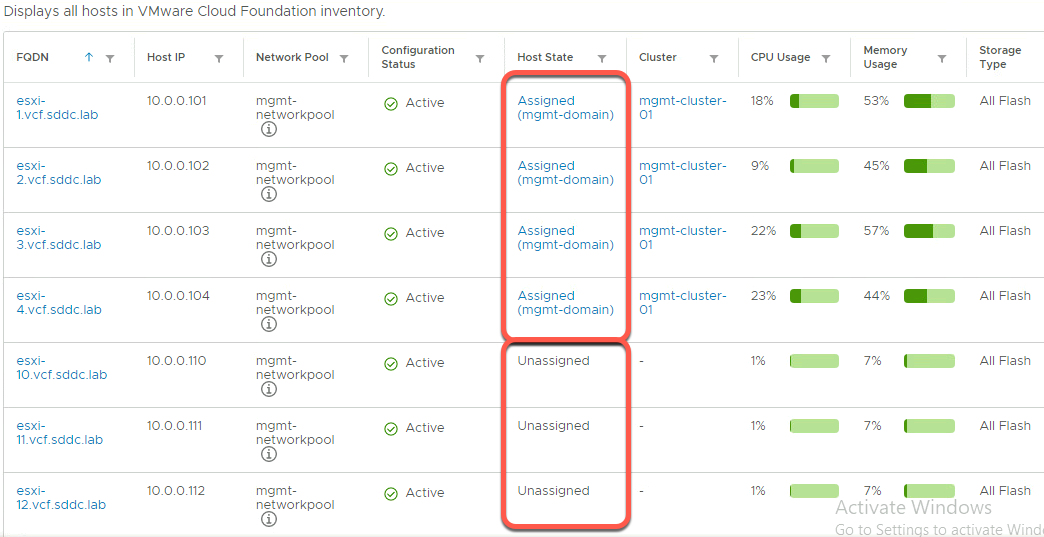
Set FTT=0 on Nested VSAN datastore. (Optional)
The following step is recommended to reduce out of space issues on the nested environment. As this is a lab environment, and running on underlying SSD, it is typically acceptable to reduce redundancy in the nested environment
- Using the vSphere Web Client, click to expand the menu, then click Policies and Profiles
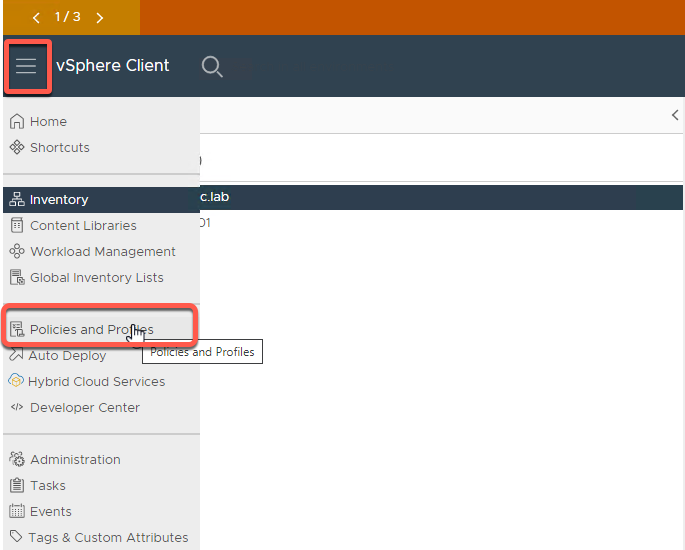
- Select VM Storage Policies -> vSAN Default Storage Policy -> Edit
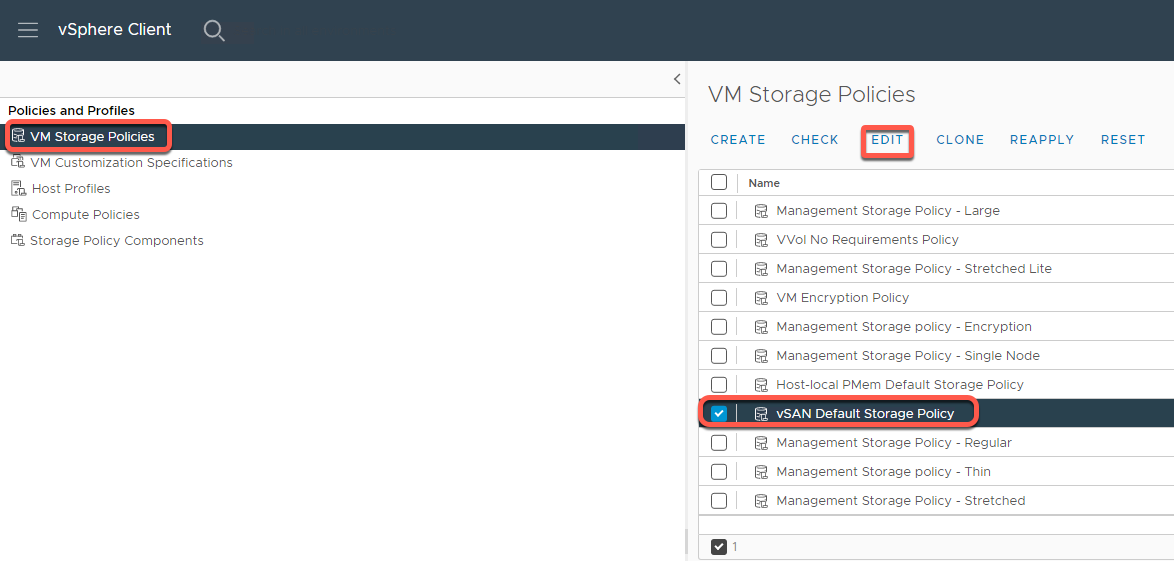
- Leave Name and Description as is and click Next
- On the vSAN Availability tab, set Failures to Tolerate to No Data Redundancy then click Next
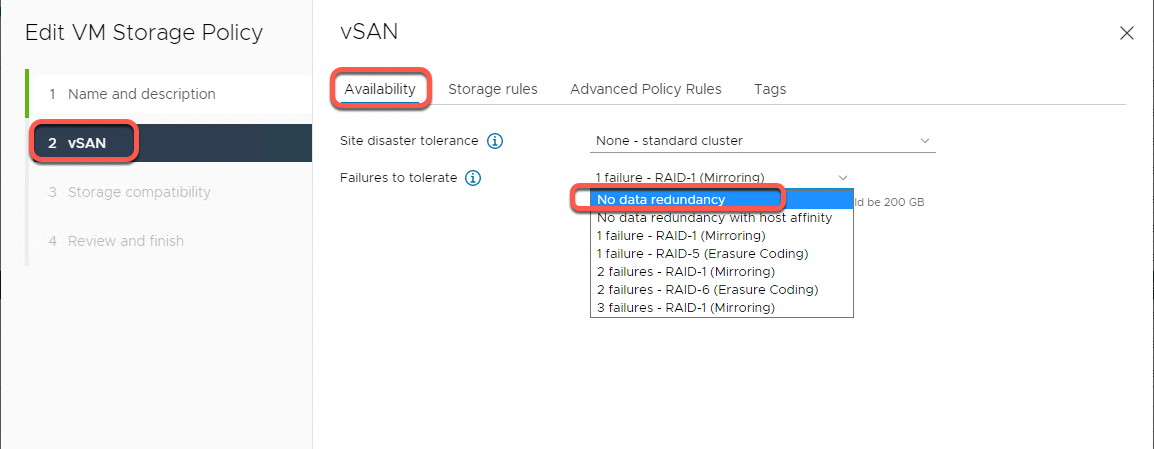
- Click next on Storage Compatibility

- Review setting and click Finish
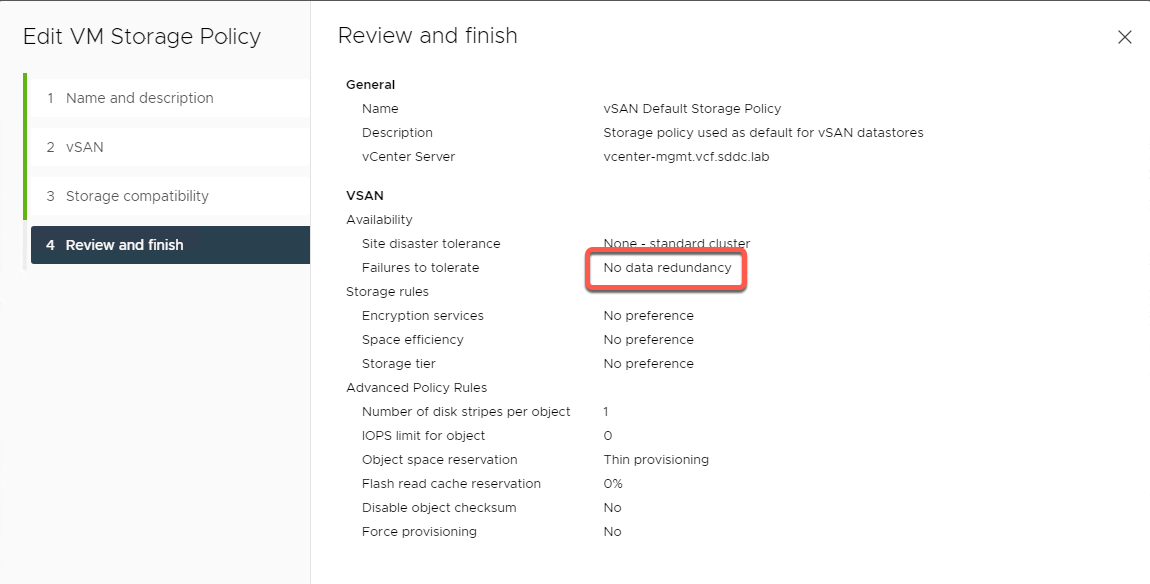
- Select Now when prompted on Reapply to VM’s, then Yes
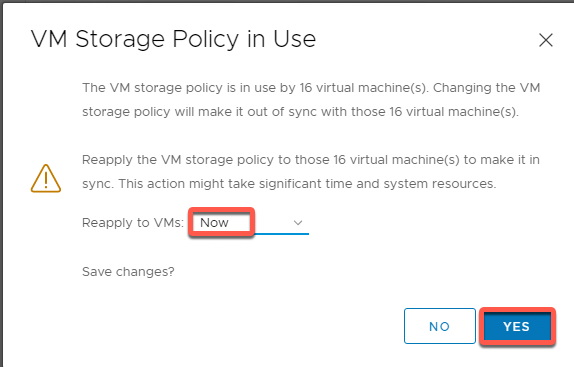
Reboot Holo-Console VM
- Using the vSphere Web Client, select the Holo-D-Console and click Restart to reboot the VM. NOTE: This step is required to clear temporary Holo-Console network routing. After reboot Holo-Console receives routing, DNS, NTP, etc from Cloud Builder within the pod.

